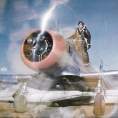-
Posts
4,093 -
Joined
-
Last visited
-
Days Won
28

GeeBee replied to GeeBee's topic in Mooney Safety & Accident Discussion

GeeBee replied to DXB's topic in Mooney Safety & Accident Discussion

GeeBee replied to gabez's topic in General Mooney Talk

GeeBee replied to gabez's topic in General Mooney Talk

GeeBee replied to gabez's topic in General Mooney Talk

GeeBee replied to gabez's topic in General Mooney Talk

GeeBee replied to toto's topic in Mooney Safety & Accident Discussion

GeeBee replied to toto's topic in Mooney Safety & Accident Discussion

GeeBee replied to toto's topic in Mooney Safety & Accident Discussion

GeeBee replied to toto's topic in Mooney Safety & Accident Discussion
We have placed cookies on your device to help make this website better. You can adjust your cookie settings, otherwise we'll assume you're okay to continue.